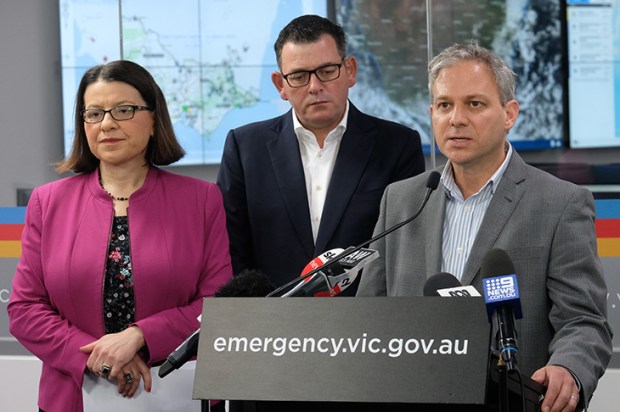Inflation doesn’t stem from external forces or market failures, nor is it an unpredictable ‘black swan’ event, as described by Nassim Taleb. Inflation rather results from poor government policies. It’s more like a ‘pink flamingo’, an obvious problem that everyone sees but neglects to address until it’s too late.
Nobel laureate Milton Friedman astutely commented that, ‘Inflation is the one form of taxation that can be imposed without legislation.’ This observation may provide insight into why, despite claims to the contrary, the Albanese government seems to be implementing policies that perpetuate and sustain inflation rather than mitigate it. After all, inflation can generate the tax revenues needed to fund the government’s extensive and expensive spending programs.
The government and its economic advisors appear hesitant to recognise that the era of fiscal and regulatory irresponsibility, which has been cushioned by the deflationary effects of globalisation and the accommodating monetary policies of central banks, is rapidly approaching its end.
Treasurer Chalmers frequently refers to the evolving global economic and strategic landscape as ‘churning and changing’. Yet despite acknowledging this shift, he has not adapted his policy toolkit to meet the new challenges. As the saying goes, to a hammer, everything looks like a nail, and the government continues to tackle every economic and social issue with the same combination of increased spending and more legislation.
Within government, the default response to any situation, whether the economy is thriving or struggling, seems to be the same: increased government spending and regulation. There never seems to be a compelling economic argument or appropriate moment to reduce either.
Since the early 2000s, Australia’s prosperity has been underwritten by the dividends of globalisation. Record commodity sales and prices, along with the deflationary effects of China and other Asian countries becoming manufacturing hubs, have helped keep consumer prices low. And when poorly conceived policies threatened economic growth, the Reserve Bank of Australia (RBA) would swiftly intervene with accommodating monetary stimulus to mitigate the damage.
This benign environment is rapidly coming to an end. The landscape is indeed ‘churning and changing’. And given the government’s refusal to reconsider its policy settings and foundations, it should not be surprised that inflation remains stubbornly high. Rather, it should be surprised that it isn’t rising further.
In the little over two years since the Albanese government took office, nearly every economic policy that might have previously had minimal impact has instead contributed to inflation – from sovereign interventions in commodity markets; to increases in middle-class welfare; to labour market interventions that reduce productivity; to unprecedented levels of spending, particularly on out-of-control and fraud-riddled social programs; and energy market deformations. The government’s actions, individually and cumulatively, are entrenching inflation.
Friedman was awarded his Nobel Prize for his work on monetarism, famously stating that, ‘inflation is always and everywhere a monetary phenomenon’. Often overlooked, however, is the second part of his insight that ‘inflation… can be produced only by a more rapid increase in the quantity of money than in output’.
This imbalance was evident in the RBA’s latest Monetary Policy Decision statement, which noted that, ‘higher interest rates have been working to bring aggregate demand and supply closer towards balance’. This statement also reaffirms Say’s Law, which observes that supply creates its own demand, and changes in aggregate demand only affect the price level, not real gross domestic product or employment.
Yet while much of the current economic discourse focuses on aggregate demand, there is scant discussion on enhancing aggregate supply through promoting productivity and production. Instead of pursuing policies that enhance productivity and production, it has become increasingly common for governments to label every new spending or regulatory initiative as an ‘investment’ or ‘productivity’ measure without any evidence to support such claims.
The notion that universal government-funded childcare enhances productivity is as credible as suggesting that government-owned petrol stations would lower fuel prices. Such policies are more likely to destroy businesses and jobs than to create them.
If a business were to invest like government, it would rapidly go broke.
Unfortunately, the unfounded assertions made by our politicians and governments often go unchallenged, despite the noticeable correlation between the increasing size and frequency of so-called government investments and productivity measures, and declining actual productivity and frequency of economic dislocations. For more than two decades, it has been bipartisan policy at all levels of government to consistently undermine productivity and production.
Just as the era of globalisation-driven economic windfalls is coming to an end, so too, it seems, are the days of frank, fearless, first-rate economic advice from Treasury. Earlier this year, Treasury Secretary Stephen Kennedy praised the inflation-powered system of bracket creep tax increases as an ‘automatic stabilising influence’, arguing that adjusting tax brackets for inflation during a period of rapid price increases would feed money back into the economy, making it harder to control inflation. Conveniently, Kennedy failed to mention the crucial alternative to increasing taxes to ameliorate inflation: reducing government spending, a response which could help bring inflation under control without surreptitiously and usuriously taxing Australians.
Addressing Australia’s economic challenges requires a fundamental rethinking of government and government policy. This shift includes altering the political incentives that encourage unchecked spending and excessive regulation. If an investment manager or business director made representations akin to what our politicians did, they would be rapidly prosecuted and jailed. Asic and the ACCC would be on to them faster than a hawk spotting prey in an open field. Yet conveniently, the statements and financial projections made by politicians are not subject to the same civil and criminal liabilities imposed on private sector actors. Making unfounded and unsubstantiated claims about the benefits of higher spending and wasteful programs is how elections are won.
For far too long, governments at all levels and across the political spectrum have been aware of Australia’s economic issues; problems that call for less government, not more. Unfortunately, the political incentives are to deliver more and more government, irrespective of the costs and consequences.
A cognitive and policy reset is urgently needed. Australia’s next significant economic downturn won’t be a sudden, unexpected event but rather a ‘pink flamingo’—a clearly visible issue that is rapidly gaining momentum. The warning signs are evident. At question is whether there will be the will to act before it is too late.
Got something to add? Join the discussion and comment below.
You might disagree with half of it, but you’ll enjoy reading all of it. Try your first month for free, then just $2 a week for the remainder of your first year.












